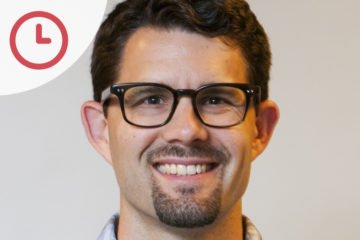Podcast Available on iTunes and Spotify.
Hello, I’m Thomas Locke and this is Five Minutes, the podcast that brings you closer to the malaria experts.
When testing for malaria, there are two primary options: lab-based diagnosis and RTDs, Rapid Diagnostic Tests. There are pros and cons with each.
Lab-based diagnosis, whilst accurate, require expert training and a well-equipped lab, which may not be available in low-resource settings. RTDs, whilst portable and inexpensive, are not always accurate, reporting false positives and false negatives.
But both of these methods require a blood sample from the patient. This in itself poses risks; bruising, swelling and even infection.
One of the new methods of malaria diagnosis in development does not require a blood sample – the so-called Matiscope by Brian Gitta, a Ugandan inventor.
And I’m delighted to be joined by him now. Brian, thanks for joining me.
When did the development of the Matiscope begin?
The development of the Matiscope began approximately five years ago when I was a freshman at University. Coming from the sub-Saharan region and going through all the different episodes of malaria, finding it hard to diagnose. That’s when I decided to share this idea with a friend of how can we make diagnosis better? What can we do to aid diagnosis and aid people to make sure that we make their lives better and get the services and the medication as early as possible?
It’s quite different, this device, from the traditional methods of diagnosis because it doesn’t require any blood to be taken from the patient. So, how does the Matiscope actually work?
When a person is infected with malaria, the Plasmodium parasite lives in the person’s bloodstream. And while there, it changes the chemical and physical composition of these red blood cells. So, using the principles of light scattering, we’re able to shine a light onto the sample and deduce whether these changes are present or not. Additionally, hemozoin is produced that is magnetic. So, using magnets, we’re able to align the hemozoin and, if it’s present in your bloodstream, you’re carrying the parasite.
The accessibility of the result of that test will be really important. How is the result shown? How does the inspector know whether a person has malaria or not?
We are working around the best way to present these results to people. Ideally, making sure that the person can get these results from their mobile phone or their laptop. But we realized, in the earlier stages, that that may aid self-medication. So what we are working on is seeing how we could deliver the service at health centres. Then health professionals present these results to the patient and then go to the next step of medication so that we complete the law.
How is the device charged? Is it through solar power or through the mains electricity?
Those are the things we’re are still working on in the clinical trials. We are trying to ask the same questions to the people we are working with. Currently, it has a battery and it’s directly plugged into a power outlet. But we’re looking into opportunities of making it solar power in the communities so that it can stay and run for, say, eight hours or so, so that it can aid these facilities for a full day of diagnosis.
You talk about these clinical trials, what are the next steps? I know there was talk of trying to get over the regulatory hurdles and trying to ensure legal certification. What are the next steps?
The results that come out from that clinical trial will direct us into the next step. But, according to our timeline, the next steps are making the final refinements so that we have the final product aligned. After that, we will go to the regulators. Strategically, we are looking at probably targeting the CE mark, because that way it’ll be easier to penetrate some of the regions in the sub-Saharan communities, rather than doing each country’s regulatory framework.
This Matiscope, the malaria detection device, is part of a wider offering from you called Matibabu. Could you tell me more about that?
Matibabu is a service that aims to close the gap between communities and their rightful access to healthcare. For the malaria infection, we are looking at offering the diagnosis, but also at building a data repository on the cases to show the geographical distribution and evolution of the cases. This, in return, can plug into other big organisations like pharma, clinical companies or the malaria control programmes at a national level and aid then in making informed decisions when it comes to the distribution of, say, malaria nets or medication so that resources are managed equally across the regions.
Brian Gitta, thanks very much.
Thank you.


